A CONVERSATION with Educator, Creative Technologist and Designer PAOLA GUIMERANS (Spanish version here)
Scaling expressive technologies for STEAM learning often starts in train-the-trainer workshops. Hands-on sessions with curious educators and their organizations introduce new materials and invite participants – typically coaches, program managers, teachers, and subject matter experts such as artists, introductory CS instructors, department leads and their teams – to explore new ways to think about STEAM learning with their communities.
Paola Guimeráns is an artist, interaction designer and educator based in Spain. Her creative research addresses STEAM education, wearables electronics, e-textiles, open-source technologies, material explorations, interactive design and interdisciplinary installations. Since 2018 she has been working with the School Library Advisory department in Galicia on the School Creative Libraries project; last month, she shared an article about a workshop on paper circuits that she taught for teachers responsible for school libraries at the Training and Resources Center of Ourense. We talked to her about her work and this workshop.
CHIBI: What sent you down this path with craft and maker culture? And what inspired you to develop your expertise with e-textiles, craft and design?
Paola: In 2000, after I graduated in Fine Arts, I obtained a Postgraduate in Digital Culture and a Spanish Teaching certificate. In 2005 I participated in the first Arduino workshop hosted by Medialab Prado Madrid, and afterward, I got passionate about programming and creating interactive art. In 2008, I moved to NY to Parsons School of Design to attain an MFA in Design and Technology.
At that time, I discovered e-textiles and wearable technology and I started to research the work of pioneers, such as Maggie Orth, Joanna Berzowska and Leah Buechley.
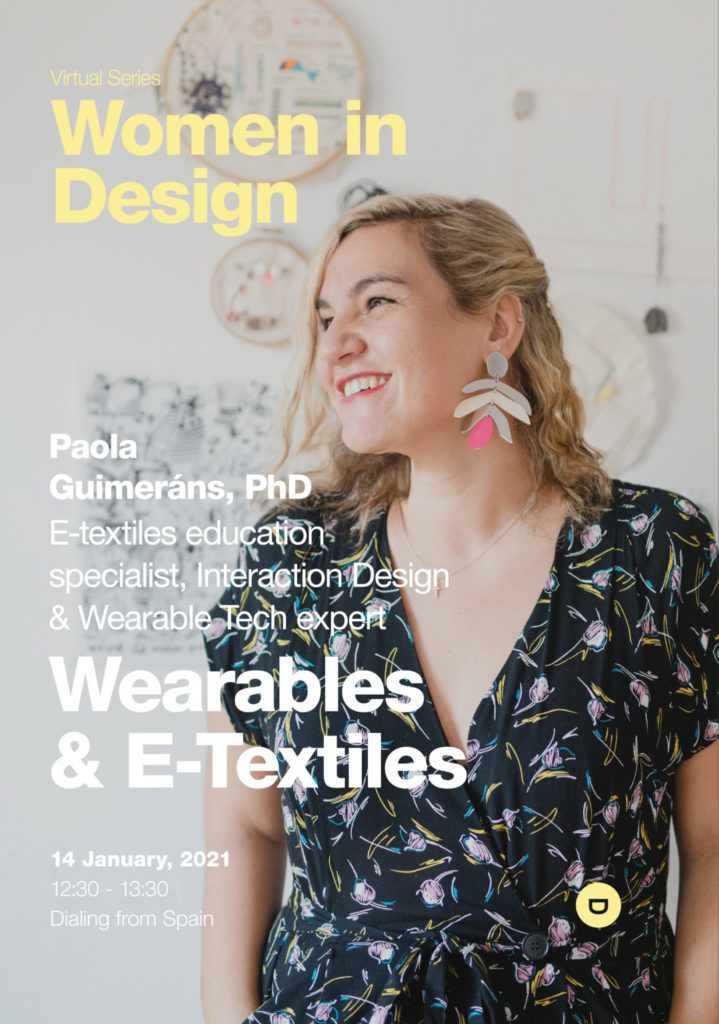
I began using Leah’s Lilypad Arduino kit in my artwork; it inspired me to reflect on a critical aspect in our understanding of new technologies — how new tools, in their accessibility and in how they allow us to engage with familiar materials and art forms, help to demystify our use of technology.
At that time, I joined the maker and the STEM to STEAM movement led by John Maeda. I discovered the paper circuits field thanks to the amazing artwork of Jie Qi and I participated in different soft circuits workshops led by Hannah Perner-Wilson at the High-Low Tech group at MIT. Furthermore, for the past 12 years, I have worked with prestigious institutions like Quest2Learn, Fashion Technology Lab, Parsons, Inditex, the Madrid Ministry of Education or Ministry of Culture, Education and University Planning of the Xunta de Galicia to educate and support children and adults in STEAM education through e-textiles and Maker culture.
CHIBI: Paper circuits are a specific and open expression of these possibilities. How do you think about these materials and components?
Paola: In my opinion, the paper circuits field offers a wonderful opportunity to explore techniques and processes for blending soft electronics and computation as a medium for creating expressive and personally meaningful technological arts. Thus, paper circuits are a great learning tool, a novel and enjoyable way to learn about electricity and programming at the intersection of art, science, and technology.
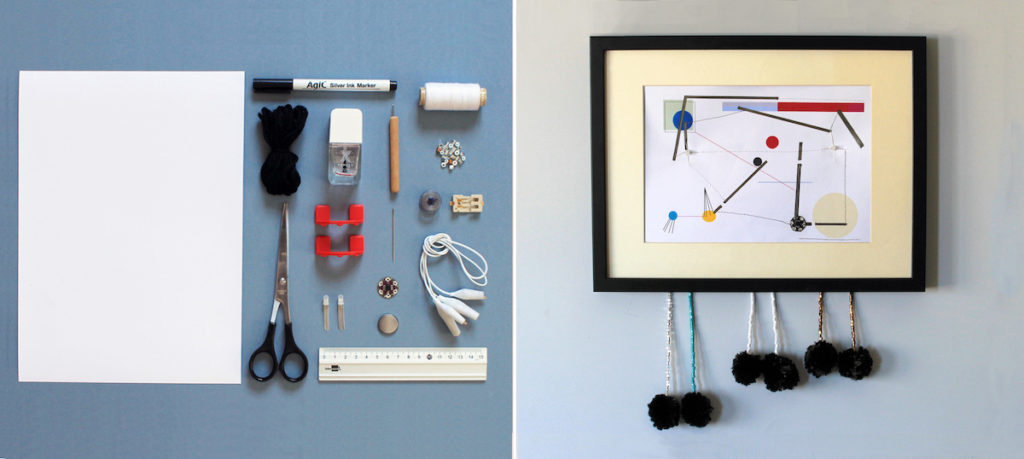
In fact, materials such as copper tape or the conductive paint offers new wiring options that eliminate the need for soldering, which enables the possibility to easily teach hands-on activities about how to incorporate simple circuitry into a variety of materials.

CHIBI: Here’s the writeup Paola shared on her work in Galicia and “the school library as a cooperative and creative learning center.” It’s a familiar format – 20+ educator/school librarians, four of whom had experience with engineering and design, in this case with robotics. Paola notes the integration goals for the workshop: connecting computation and the visual arts and offering accessible program experiences that engage a learning community as a whole. Paolo wrote:
Following the trend of maker culture, since 2016, the Galician School Library Advisory department in Galicia has been promoting the Creative School Libraries program. This project is committed to the creation of creative spaces in the school library in order to help expand opportunities for students, support multi-literacy, exploration, research, creativity and cooperative work, regardless of styles, rhythms and learning preferences. This program is an ideal tool to promote the talents of students in a personalized way within the diversity attention plan. In addition, its offer of multi-format and multi-level resources facilitates the implementation of the universal design for learning (DUA). It is necessary to highlight the importance of developing this project in the rural context as a facilitator of resources, methodologies and proposals for innovative activities adapted to the environment.
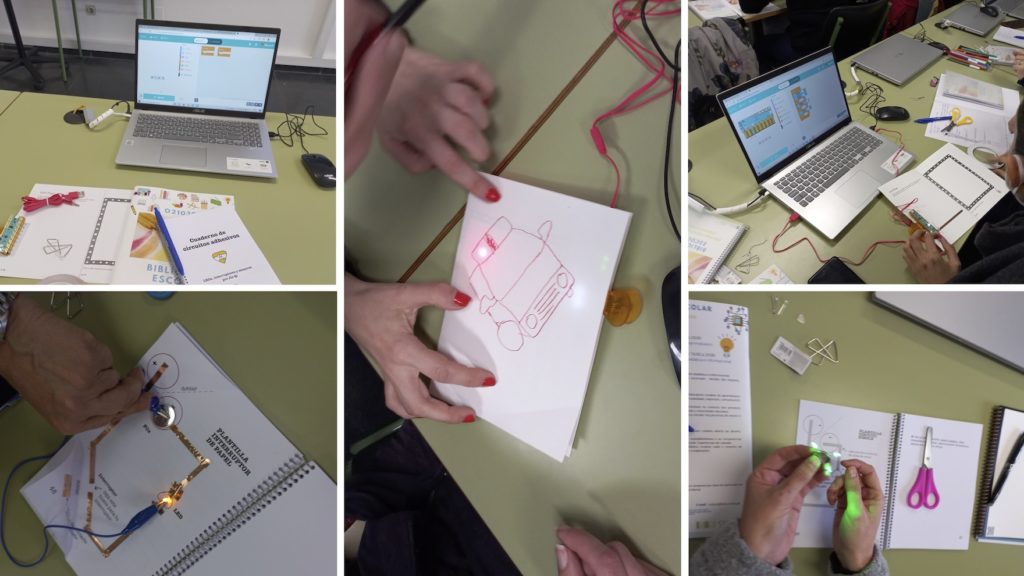
As part of this project, different training workshops are offered every year. Since 2018 Paola Guimerans has led the “E-textiles, Paper Circuits and new creative technologies workshop,” in which school library teachers and students carry out different activities related to educational robotics based on electronic textiles and paper circuits. The final objective of these workshops is to promote computational thinking in students, in order to strengthen their programming skills and build confidence in the operation of basic electronics from the visual arts.
Workshop Description:
—> Workshop Title: “Creative School Libraries. The school library as a cooperative and creative learning center”
—> Duration : 4h
—> Location: Training and Resource Center Ourense (CFR de Ourense) http://www.edu.xunta.gal/portal/cfrourense
—> Participants: 22 school library teachers (only 4 teachers have been done robotics activities before)
The session begins with a general introduction to STEAM education and the importance of including paper circuits activities in school libraries. Next, the teachers learn the basics of circuits and electronics with the interactive sketchbook, written by Jie Qi.
During one-hour they make a simple circuit, parallel circuit, DIY switch and theblinking slide switch. Then, they are introduced to the Chibitronics’ microcontroller board, the Chibi Chip, and Make Code software to learn how to program the lights to create an interactive book cover. The workshop ends with the presentations of the works.
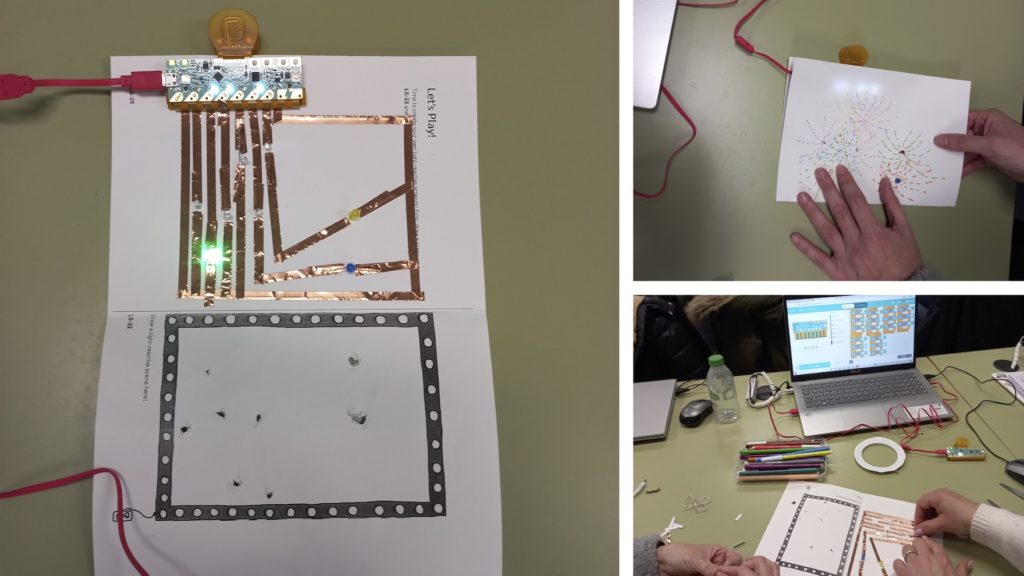
Content:
–> Creative spaces in School Libraries (Creative School Libraries)
–> Creative Libraries and inclusivity
–> Computational thinking, electronics and programming in the Creative School Libraries
–> Practical activity
Objectives:
–> To advance in the school library model of the XXIst century, as a creative learning laboratory open to the whole school community, promoting multi-literacy, creativity, expression, communication, and collaboration
–> Design resources that are multi-literate and inclusive in the context of an integrated documentary project or other collaborative projects aimed at the entire educational community
–> Seek strategies for the full integration of school library resources into teaching and learning processes
CHIBI: One goal for this kind of workshop is follow-on experimentation and planning, leading to measurable adoption. What’s been your experience with pickup after these sessions? Have you found that there are specific institutional or instructional factors and conditions that contribute to successful implementations?
Paola: Based on my observations and the opinions provided by the participants in the final questionnaires, I can conclude that making paper circuits and adding coding with the Chibi Chips is a great crafts-based medium for teaching computational thinking, programming, and electronics to the library school teachers with non-technical skills. Also, I concluded that paper circuits as a medium to support the constructivist methodologies could positively help the teachers understand the importance of STEAM education.
Regarding the institutional factors, I would like to highlight the help of Nuria González who is the CFR of Ourense (the local Resource and Training Center) reference advisor and and organizer of this workshop. One issue we encountered was the fact that here in Spain there are not many Chibitronics distributors, which initially made it challenging to secure Chibi Chips in volumes necessary for the workshop. With Nuria’s help, we reached out to the “Carballo Store,” a local distributor in Galicia that contacted Chibitronics directly and was able to secure the microcontroller boards. Since this distributor already works with the Xunta de Galicia it was easy to process payments and keep the program on schedule.
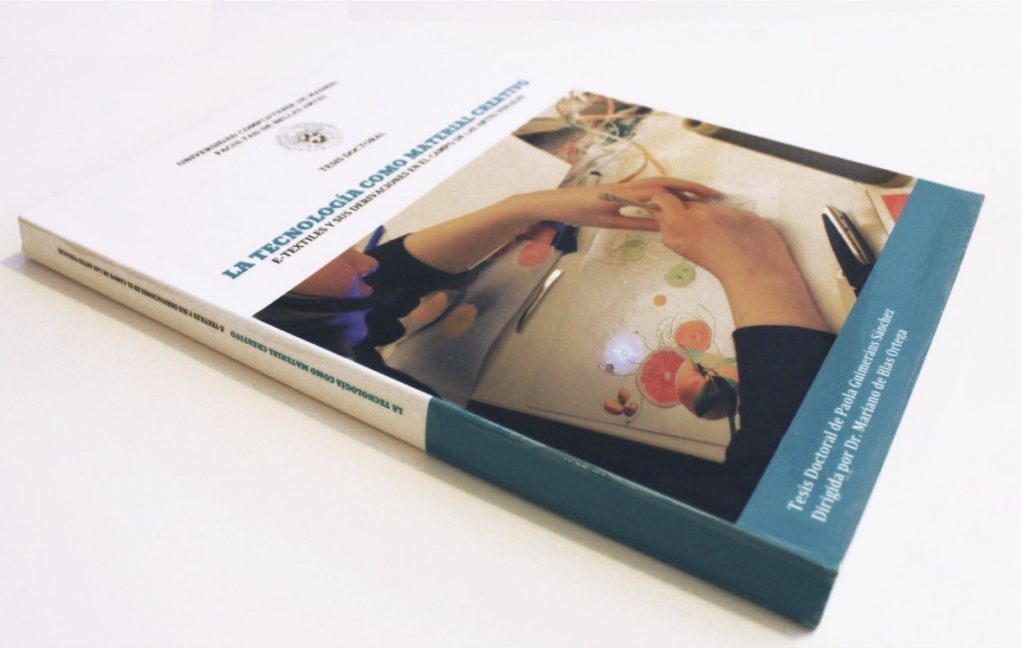
CHIBI: You have wonderful resources available on your website, from your Phd thesis to the online resource platform ProtoipadoLAB and the education technology project Aula STEAM.

What’s the best way to reach you? And what can you share about upcoming projects, workshops you’re planning?
Paola: My next projects will be related to training current and future teachers who are currently enrolled in digital and STEAM education programs on pedagogical practices for using e-textiles, paper circuits and computational thinking. Also, I will teach fashion design and product design students about e-textiles and wearable technology. You can contact me at espacio.aulasteam@gmail.com.
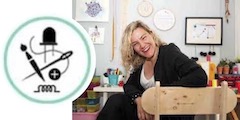
Many thanks to Paola for the workshop writeup, the imagery included — and for working with us in English and providing a Spanish version of the post as well.
